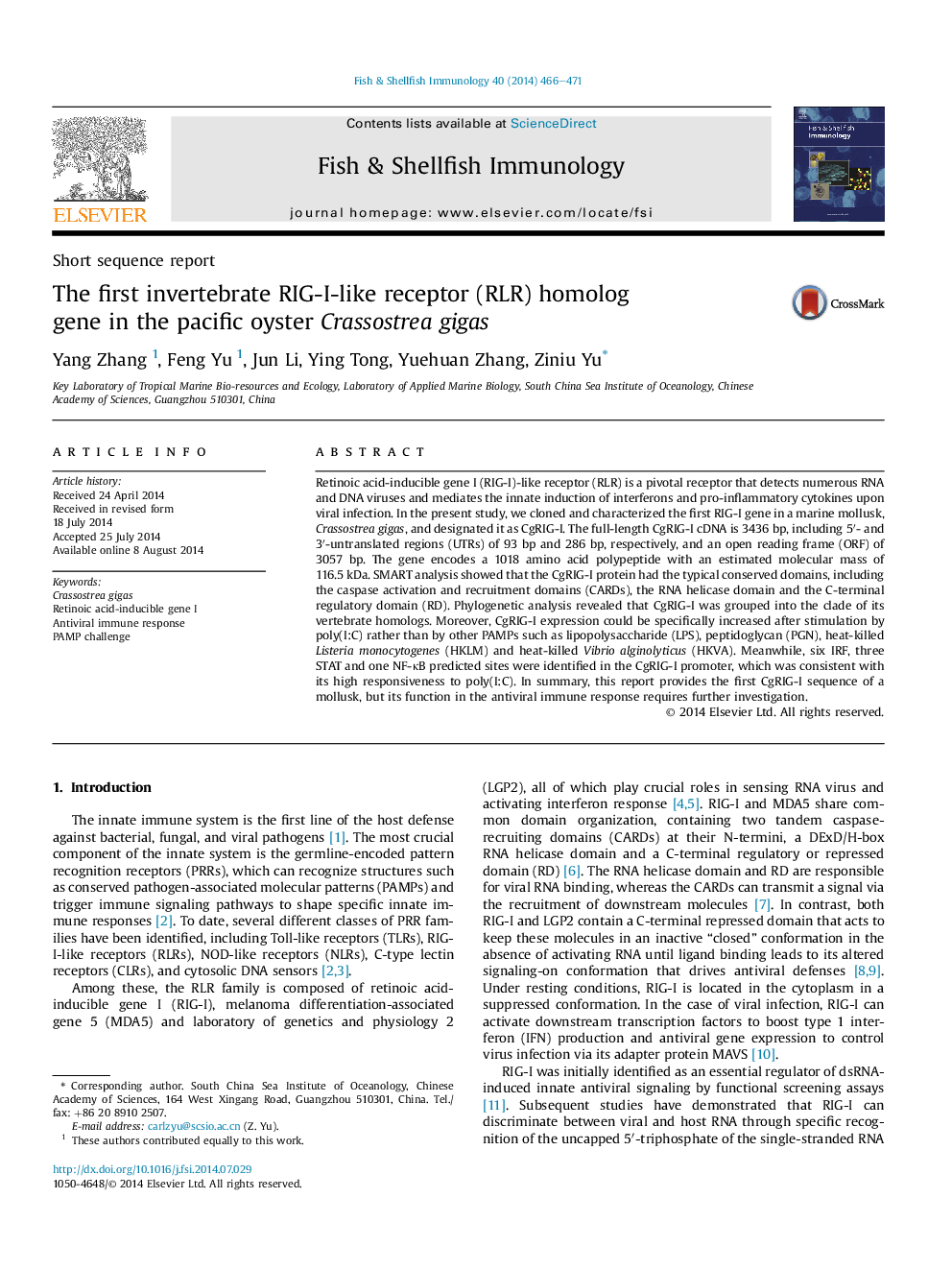| Article ID | Journal | Published Year | Pages | File Type |
|---|---|---|---|---|
| 8499625 | Fish & Shellfish Immunology | 2014 | 6 Pages |
Abstract
Retinoic acid-inducible gene I (RIG-I)-like receptor (RLR) is a pivotal receptor that detects numerous RNA and DNA viruses and mediates the innate induction of interferons and pro-inflammatory cytokines upon viral infection. In the present study, we cloned and characterized the first RIG-I gene in a marine mollusk, Crassostrea gigas, and designated it as CgRIG-I. The full-length CgRIG-I cDNA is 3436 bp, including 5â²- and 3â²-untranslated regions (UTRs) of 93 bp and 286 bp, respectively, and an open reading frame (ORF) of 3057 bp. The gene encodes a 1018 amino acid polypeptide with an estimated molecular mass of 116.5 kDa. SMART analysis showed that the CgRIG-I protein had the typical conserved domains, including the caspase activation and recruitment domains (CARDs), the RNA helicase domain and the C-terminal regulatory domain (RD). Phylogenetic analysis revealed that CgRIG-I was grouped into the clade of its vertebrate homologs. Moreover, CgRIG-I expression could be specifically increased after stimulation by poly(I:C) rather than by other PAMPs such as lipopolysaccharide (LPS), peptidoglycan (PGN), heat-killed Listeria monocytogenes (HKLM) and heat-killed Vibrio alginolyticus (HKVA). Meanwhile, six IRF, three STAT and one NF-κB predicted sites were identified in the CgRIG-I promoter, which was consistent with its high responsiveness to poly(I:C). In summary, this report provides the first CgRIG-I sequence of a mollusk, but its function in the antiviral immune response requires further investigation.
Related Topics
Life Sciences
Agricultural and Biological Sciences
Aquatic Science
Authors
Yang Zhang, Feng Yu, Jun Li, Ying Tong, Yuehuan Zhang, Ziniu Yu,
